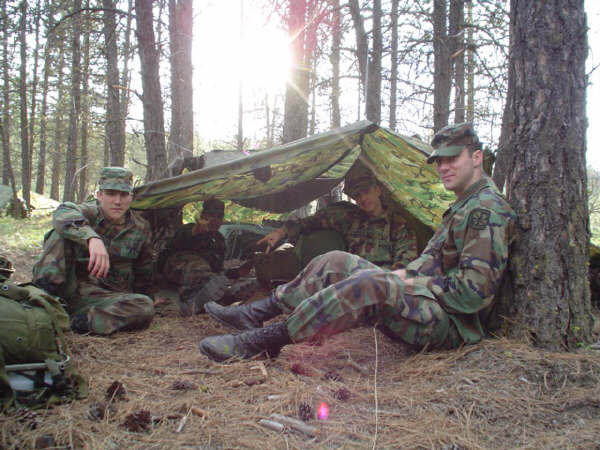
If you have military experience, you're probably familiar with basic infantry tactics. These usually cover the essentials of patrolling techniques, such as the do's and don'ts of "moving with a purpose through various terrain."
But if you've never served in the military, there's no need to fret. Should you feel the need to read up on how you can move from point A to point B and how to evade those who may wish to harm you, please keep reading this article.
Those who have military experience know what it's like to have to traverse towns and villages on foot. This may often involve tense situations where you're never entirely sure of what's lurking around the next corner or if there's anyone hiding down the street.
Since most cities are full of "multi-story buildings, street-level and below-street-level rooms, and passageways," it can be difficult to travel between destinations safely. However, when you're keeping watch in rural areas or in the woods, your approach to dealing with hidden enemies will definitely change. If you're in a wooded area, potential attackers will find it easier to conceal themselves, especially if they're familiar with the landscape.
Keep in mind that patrolling techniques are often the same despite the kind of terrain you are in. Always practice the following: (h/t BioPrepper.com.)
- Plan your route -- Do this before you go on patrol so you know where you're headed. But once you start patrolling, you still have to plan the route as you go along. Brief everyone in your patrol before you head it.
- Stay sharp -- Check everything in your sight. Scan for any suspicious movements or any object that's out of place. Give any area that can conceal an enemy a wide berth to avoid an ambush, and keep the barrel of your rifle moving in the same direction that your eyes are scanning. (Related: The 7 ways you can accidentally sabotage your own SHTF plans.)
- Always protect the lead element -- If you're about to cross the road, don't let everyone cross en masse. Navigate areas in a single file or go in pairs, and leave someone at the crossing point so they can give you cover fire if the need arises. When it's their turn to cross, whoever's already on the other side of the road should also be ready to provide them with cover.
- Prepare for the unexpected -- Plan for all kinds of possible obstacles in your way. Even if you know it's going to be a short trip, bring water rations anyway. It's better to be over-prepared than to be caught off guard.
What to do when SHTF
Aside from patrolling techniques, here are some of the other things that you need to remember when disaster strikes:
- Keep your equipment updated and in good condition -- Don't wait until the last minute to check if your bug out vehicle, weapons, and supplies are properly maintained. You never know what's going to happen so it's always better to prepare in advance. Keep everything in working order, and make sure your gear can carry you through different SHTF scenarios.
- Delegate tasks -- If you're part of a team, there's no need to run yourself ragged. Let them in on your plans, and try to assign people tasks that suit their skill sets.
- Go through your plans -- Plans are only effective if everyone knows them to a "T." Review them with the whole team so you can resolve any possible hindrances immediately. Practice tests so you have your bases covered.
- Review your process and your progress -- Is your current process the most effective way of doing a certain task? When you have the time, check if there's a way to improve your process and your progress.
- You can read more articles about how you can stay safe when SHTF at Preparedness.news.
Sources include:
Please contact us for more information.





















